Invasive species in the Kootenays: Red flags and other things to know
Megan MacPhee of the East Kootenay Invasive Species Council tells us what to be aware of in our own backyards

Megan MacPhee, education and communications manager with EKISC, pulling baby's breath in Invermere. — Photo courtesy East Kootenay Invasive Species Council
What is an invasive species? What can we do about them? Why should we even care?
If you’ve ever had a noxious plant take over your yard or affect your community, you’ll be familiar with some of the far-reaching impacts of these species.
Megan MacPhee is the education and communications manager at the East Kootenay Invasive Species Council (EKISC).
“Impacts (of invasive species) are the economic, social, and environmental harm that they cause,” she said. “Once people start to care about that and see how it's affecting us—how it's affecting our environment, how it's affecting our economy, and how it's affecting us on a personal story level—then learning about species around us can get more fun and a little bit more meaningful.”
You can visit the organization’s invasive species page to learn more about the designations and terminology around non-native plants.
Know the red flags
Memorizing all the species of concern in any region is a daunting task. However, MacPhee said she likes to teach people to look out for “red flags” instead.
“If I'm driving down the road and I see this huge field of one species, that's a bit of a red flag for me,” she said. “If I drive by that field the next week and the growth is doubled, that's two red flags. It’s not only a monoculture, but it's a fast growing species. I think I'm going to pull over and get the ID book or app out.”
Other red flags include things like high dispersal rate with some plants producing millions of seeds each or plants that thrive in disturbed areas.
MacPhee provided a list of multiple red flags to be alert for in regards to species in your own community. You can view that list in the sidebar below.
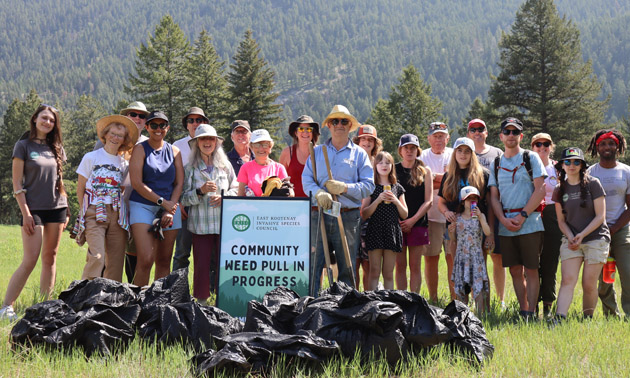
Hosting a Community Weed Pull is a great way to help the environment and learn about invasive species in the region. — Photo courtesy East Kootenay Invasive Species Council
Be aware of what you plant
Gardeners and landowners might feel like plants and seeds at garden centres will be safe, but that’s not always the case. It is legal to buy and sell most invasive species. However, according to B.C.’s weed control act, the occupier is responsible for the control of noxious plants on the property.
“A lot of those species are actually sold in garden centers,” said MacPhee. “28 of B.C.'s most unwanted horticulture plants came from garden centers. I was at a store last week and they were selling foxglove, which is a highly invasive species that we don't actually have yet.”
Wildflower seed mixes are another item to be cautious about. MacPhee said that some invasive flowers like baby’s breath, daisies and bachelor buttons came to Canada in seed mixes.
Keep an eye out
While learning the red flags of invasive species is a great start, you may want to become familiar with some of the common plants of concern in your area. EKISC provides a variety of excellent resources on their website.
Grow Me Instead is a guide for anyone who wants to reference problematic varieties and alternatives before they plan or plant their own yard. There is even a small brochure that can easily be referenced while shopping.
Megan MacPhee chose ten varieties to highlight in the Cranbrook area of the East Kootenay. Keep these in mind throughout this growing season, and feel free to reach out to EKISC if you have concerns about species in your area, or would like to access further education.
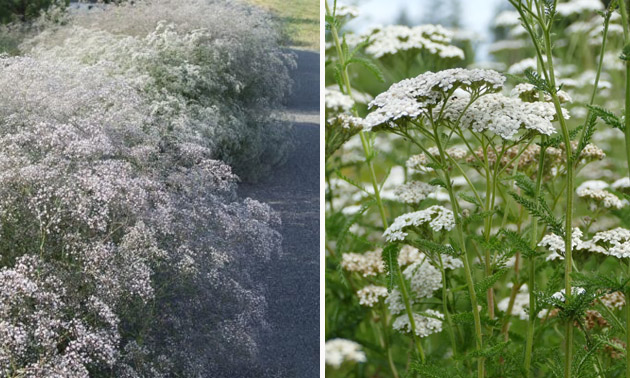
Instead of invasive Baby's Breath (left), plant Yarrow. — Photo courtesy East Kootenay Invasive Species Council
1. Baby’s Breath
This airy plant is a stalwart in bouquets, but it’s also a fast-spreading invasive that can release over 10,000 seeds per plant. Never dispose of baby’s breath from floral displays in the compost.
Plant instead: Yarrow. This tolerant plant comes in a variety of colours. It’s a clumping perennial that produces tiny flowers in tight clusters throughout the summer.
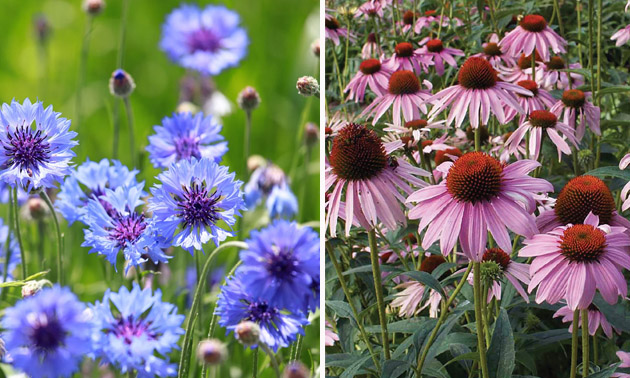
Instead of invasive Bachelor Buttons (left), plant Purple Coneflowers. — Photo courtesy East Kootenay Invasive Species Council
2. Bachelor's Button (Corn Flowers)
These attractive little flowers are popular in wildflower mixes, but can also spread throughout dry fields and wild space, reducing both crop yields and native forage.
Plant instead: Purple Coneflower. This adaptable prairie species produces a purple-petal flower while the seed head can feed birds throughout the winter.
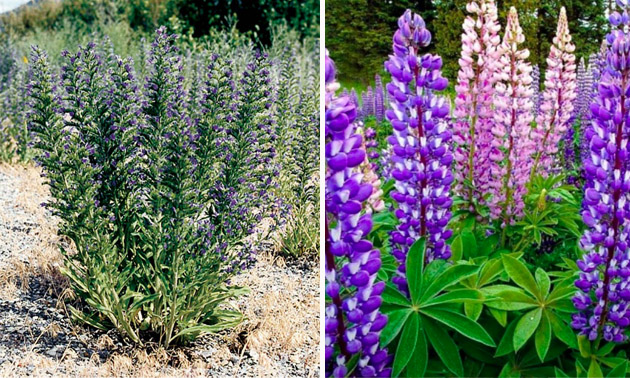
Instead of invasive Blueweed (left), plant Lupins. — Photo courtesy East Kootenay Invasive Species Council
3. Blueweed / Vipers Bugloss
This large plant is both painful to the touch and toxic to grazing animals like cattle and horses. Numerous seeds can travel by clinging to animals or people.
Plant instead: Large Leaf Lupin. Lupins are nitrogen fixers, and will benefit your soil while also providing gorgeous blue or purple pea-shaped flowers.
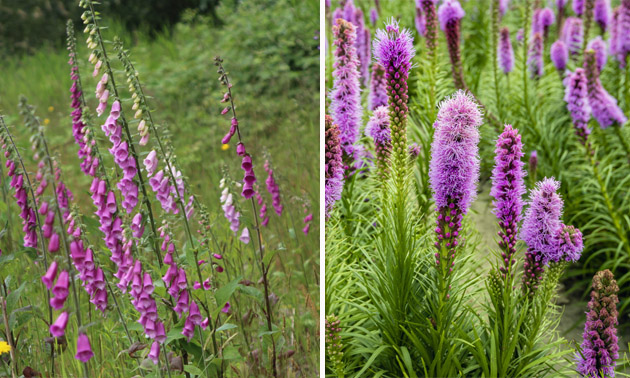
Instead of invasive Foxgloves (left), plant Blazing Star. — Photo courtesy East Kootenay Invasive Species Council
4. Foxglove
A prevalent invasive in parts of the province, foxglove is extremely poisonous to humans and animals.
Plant instead: Blazing Star. These stand-out alternatives grow tall fluffy flowers that are beneficial to pollinators.
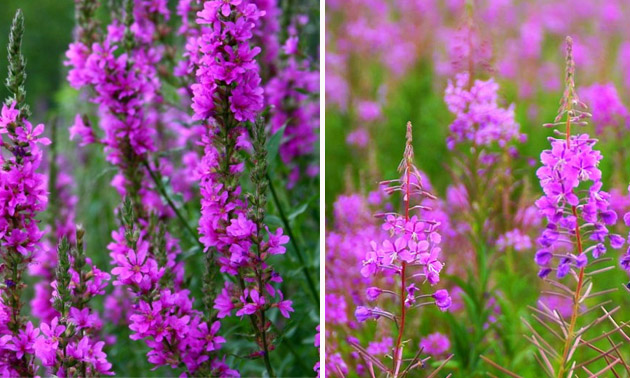
Instead of invasive Purple Loosestrife (left), plant Fireweed. — Photo courtesy East Kootenay Invasive Species Council
5. Purple Loosestrife
Spreading by both seed or root fragments, this perennial is a high-priority species. A single mature plant can disperse 2.5 million seeds, which remain viable in the soil for up to 20 years.
Plant instead: Fireweed. Equally attractive, this alternative traditionally served many functions to First Nations people, and is shown to have anti-inflammatory benefits.
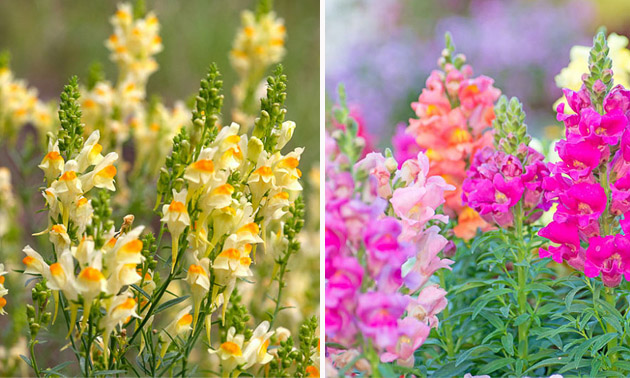
Instead of invasive Toadflax (left), plant Snapdragons. — Photo courtesy East Kootenay Invasive Species Council
6. Yellow + Dalmatian Toadflax
Thriving in disturbed areas, toadflax can easily out-compete native plants. It travels through a spreading root system, and can take over large areas.
Plant instead: Snapdragons A well-known garden fixture, the snapdragon provides an array of attractive colours as well as being very beneficial to pollinators.
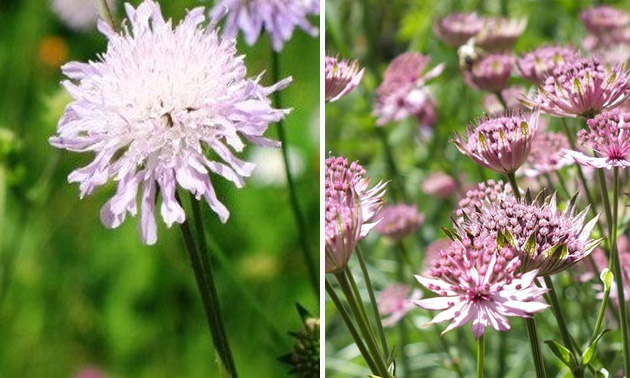
Instead of invasive Field Scabious (left), plant Masterwort. — Photo courtesy East Kootenay Invasive Species Council
7. Field Scabious
Once established, this high-priority plant produces thousands of seeds and is difficult to eradicate. It can be found in ditches throughout BC.
Plant instead: Masterwort. Also known as Hattie's pincushion,this plant thrives in the shade.
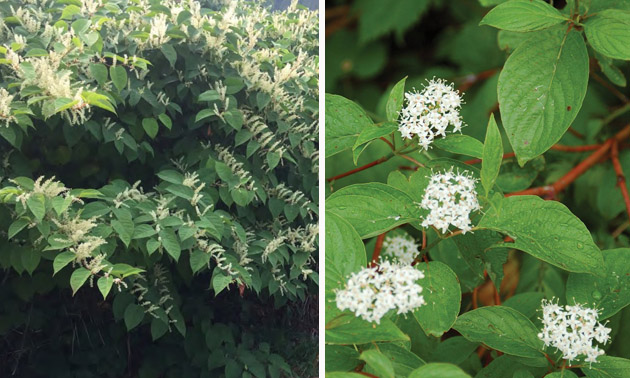
Instead of invasive Japanese Knotweed (left), plant Dogwood. — Photo courtesy East Kootenay Invasive Species Council
8. Japanese Knotweed
One of the most problematic invasive plants worldwide, knotweed is a high-priority invasive that spreads aggressively and is incredibly difficult to kill. There are four varieties that were introduced for landscaping, but have gone on to cause distress to native environments throughout the province. They spread by seed, root or stem fragments.
Plant instead: Red Osier Dogwood. This deciduous shrub offers beautiful red stems throughout the winter, and clusters of white flowers in the spring.
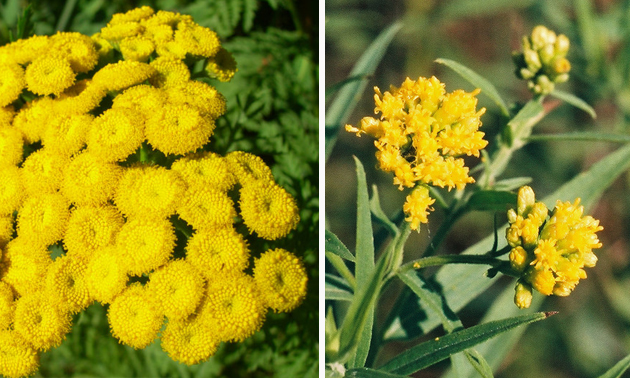
Instead of invasive Common Tansy (left), plant Goldentop. — Photo courtesy East Kootenay Invasive Species Council
9. Common Tansy / Bitter Buttons / Cow Bitter / Golden Buttons
This plant, native to Europe and Asia, spreads via both roots and seeds that remain viable for 25 years. It can displace native vegetation and cause problems for grazing livestock.
Plant instead: Flattop Goldentops. Growing this brightly coloured alternative will provide an attractive food source for pollinators in any yard.
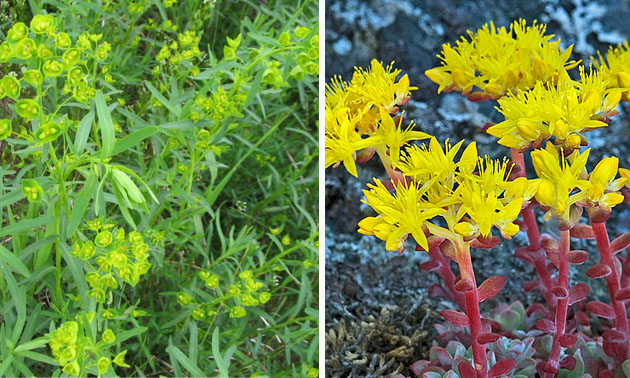
Instead of invasive Leafy Spurge (left), plant Stonecrop. — Photo courtesy East Kootenay Invasive Species Council
10. Leafy Spurge
This high-priority perennial grows from an enormous system. Additionally, it produces a chemical to restrict the growth of other plants within the area.
Plant instead: Broadleaf Stonecrop. This pretty little native sedum produces yellow flowers throughout the summer. It is very drought tolerant, making it a great option for rock gardens or hot, dry landscapes with good drainage.



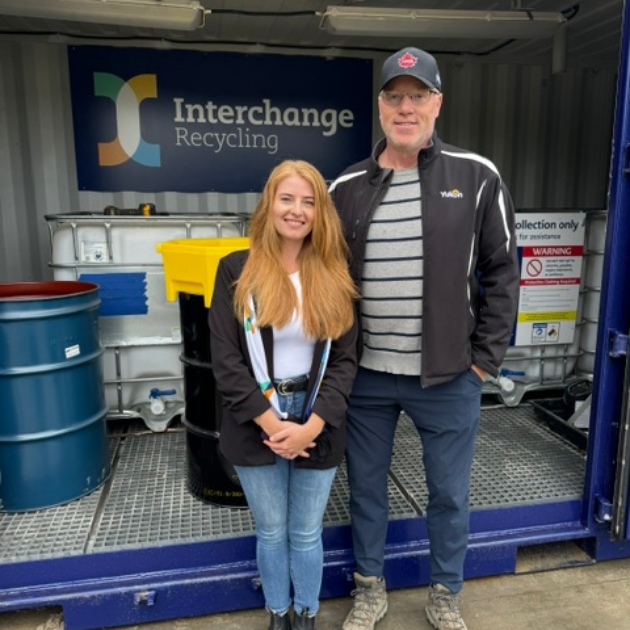
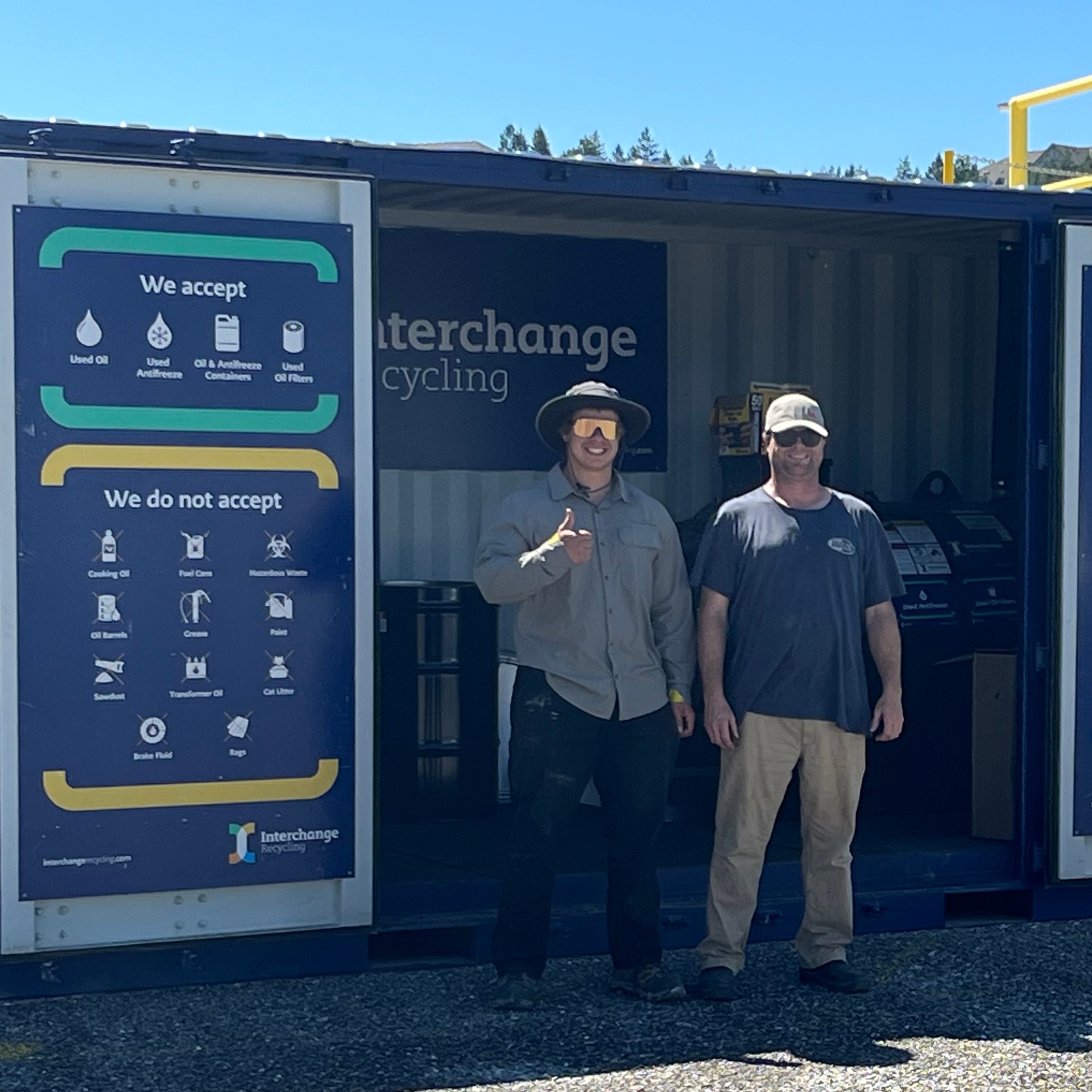

Comments